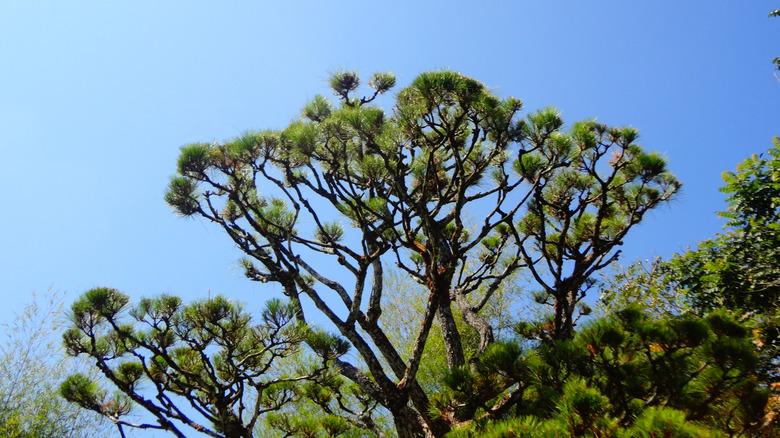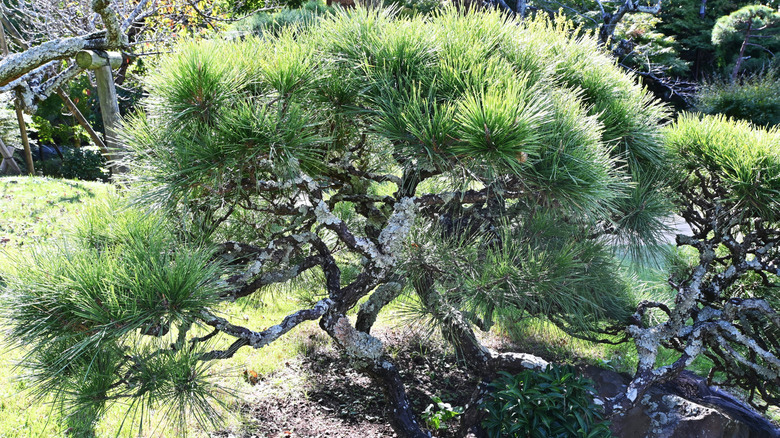The Top Pests And Diseases To Watch For When Protecting Your Japanese Black Pine Tree
Japanese black pine (Pinus thunbergii) is an incredibly striking, hardy tree with iconic long needles and asymmetrical form, providing unique visual interest to any landscape. Although it's a great choice for bonsai lovers and landscapers alike (outside of Massachussets, where it's listed as invasive), there are challenges to consider before growing a Japanese black pine tree. This tree is susceptible to a number of pests and diseases, including pine wilt nematodes, sawflies, a number of moth species, and fungal diseases.
Perhaps the most significant threat to Japanese black pine trees is the pinewood nematode, a tiny, nearly microscopic invader that can kill a tree when not caught in the early stages. Pine sawyer beetles infect the trees with these worms, as the beetle feeds on the tree and releases nematodes into the tree system. Upon infection, the tree can show signs of wilting, yellowing needles, and rapid decline. The key is vigilance — check your tree regularly for signs of beetle activity and consider nematode-resistant rootstock if planting in a high-risk area.
Sawflies can also damage Japanese black pine. They devour the needles, causing defoliation and weakening the tree's health. Sawfly larvae tend to congregate in groups, stripping trees of needles quickly. Early detection is everything — for small infestations, larvae can be sprayed off, while larger infestations may need insecticides. Promoting natural enemies — from birds to the good bugs that'll chase pests from your garden — can further help keep sawfly numbers in check.
How moths and fungal diseases affect Japanese black pine
Several moth species, including the Nantucket pine tip moth, Zimmerman pine moth, and European pine shoot moth, pose additional risks for the Japanese black pine. These pests' larvae burrow into its shoots and stems, leading to distorted growth and weakened branches. Look for the appearance of small, soft, and shiny masses of sticky resin near trunk whorls, which the tree produces to defend itself as larvae bore under the bark. Moth infestations are best treated with insecticides.
The tree is also vulnerable to fungal diseases like Diplodia tip blight, honey fungus, and needle cast. In stressed or mature trees, Diplodia tip blight usually appears as browning needles and reduced new growth. Cut away infected branches, promote good air circulation, and use fungicides during the growing season to minimize the threat.
Honey fungus attacks roots and can spread to adjacent plants. You can easily identify a diseased tree in your yard by looking for symptoms like wilting branches, thin foliage, and the growth of white fungus at the tree's base. Management, unfortunately, is difficult and infected trees should be removed to prevent the spread to other trees. Needle cast results in the browning of needles, eventually causing them to drop off. To manage this fungal disease, enhance air circulation, remove infected needles, and consider fungicides to safeguard healthy growth.

